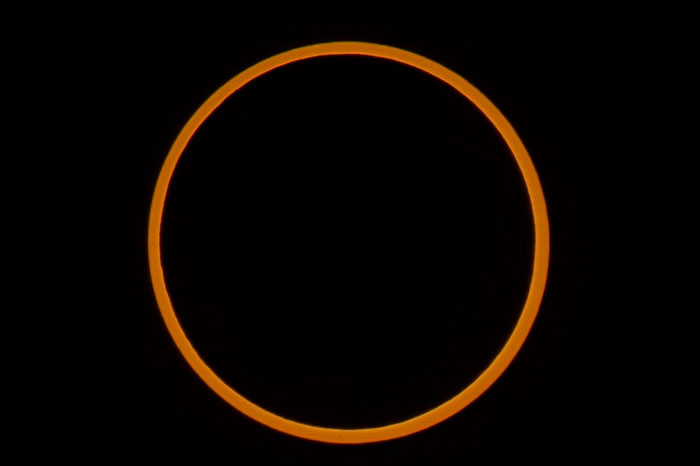The famous eclipse in history
On the afternoon of November 13 (local time), people living on the north coast of Australia had the opportunity to admire the first total eclipse in the country in the past decade. According to astronomers, the next total solar eclipse will not happen until 2015.
Since ancient times, humans have observed the phenomenon of the Moon "devouring" the Sun for a few minutes despite the fact that the total solar eclipse (occurs when the Moon passes between the Earth and the Sun, obscures completely Sun when observed from Earth) can last for an hour like today. In the past, people often considered this amazing astronomical phenomenon to be an omen of an imminent miracle, the wrath of gods or gods or the day of an imperial dynasty.
Here are some of the most famous solar eclipses in world history, according to Live Science statistics:
Ugarit eclipse
One of the earliest solar eclipses ever recorded, the Ugarit eclipse caused the sky to suddenly darken in 2 minutes, 7 seconds in 1374 BC. Historians of the Mesopotamia (Mesopotamia) civilization in Ugarit, a port city in northern Syria, once wrote that the Sun was "pushed into shame" during the solar eclipse.

Solar eclipse in China at the beginning
In 1302 BC, Chinese historians recorded a total solar eclipse that caused the Sun to be completely obscured by the Moon in 6 minutes and 25 seconds. Because the Sun is the emperor's symbol, an eclipse is considered a warning to the authorities. After each solar eclipse, the incumbent emperor will be vegetarian and conduct rituals to rescue the Sun, according to a study published in the 2003 Journal of Astronomical History and Heritage.
Assyria real Japan
In 763 BC, in the Assyrian empire (occupied by modern-day Iraq), a total solar eclipse occurred in 5 minutes. The records from there mentioned that this total eclipse occurred at the same time as a revolt in the city of Ashur. This shows that the ancients may have assigned these two events a certain binding constraint.
Jesus was crucified
Christian gospels write that the sky was darkened for hours after Jesus was nailed to the cross - a phenomenon that historians see as a strange or ominous thing about the coming dark period. Astronomical references, later historians have mentioned this incident as an allusion to the death of the Lord. While some historians associate the crucifixion with a total eclipse lasting for 1 minute 59 seconds, which happened in 29 AD, others mention the second junk, when The sun was completely obscured by the Moon in 4 minutes, 2 seconds in 33 AD, as the time marked the Lord's day of heaven
The birth of the Prophet Mohammed
The Koran mentions a diurnal phenomenon before the Prophet Mohammed is born. Historians then attached the event with a total solar eclipse lasting 3 minutes, 17 seconds in 569 AD. The sun also disappeared for 1 minute, 40 seconds after Ibrahim's death - the son of the Prophet Mohammed. However, the world's first Muslim believer did not believe the solar eclipse was a premonition of God. Instead, according to Islamic texts called Hadith, the Prophet Mohammed once stated: "The moon and the sun are not obscured by death or the birth of anyone".
Eclipse for King Henry
When King Henry I of England died in 1133, this incident coincided with a total eclipse of 4 minutes and 38 seconds. Historically, it is said that "scary darkness" embraces the hearts of the people. After the death of King Henry I, a power struggle and throne pushed the kingdom into turmoil and civil war.
Einstein's eclipse
While the ancients considered the eclipse as an omen for the extraordinary actions of God, physicists considered the eclipse of 1919 as a victory of science. During the solar eclipse of 1919, in which the Sun was completely obscured in 6 minutes, 51 seconds, scientists measured the curvature of light from stars as they moved near the Sun. The results confirm Einstein's general theory of relativity, which describes gravity as the bending of space-time.
- Eclipse, eclipse appeared in November
- Video: The coronary eclipse recommended in Australia
- Vietnam did not observe the first solar eclipse of the year
- Where is the best eclipse on March 9 in Vietnam?
- Tomorrow Vietnam will receive a solar eclipse
- Admire partial eclipse across Asia
- The most famous bets in the history of science
- The first film in history about total eclipse was done by a magician
- When is the next solar eclipse in Vietnam?
- Superstitious conceptions around eclipse
- When will Vietnam observe the next eclipse?
- Decoding eclipse phenomenon, eclipse appears in the month
 'Fine laughs' - Scary and painful torture in ancient times
'Fine laughs' - Scary and painful torture in ancient times The sequence of numbers 142857 of the Egyptian pyramids is known as the strangest number in the world - Why?
The sequence of numbers 142857 of the Egyptian pyramids is known as the strangest number in the world - Why? History of the iron
History of the iron What is alum?
What is alum?